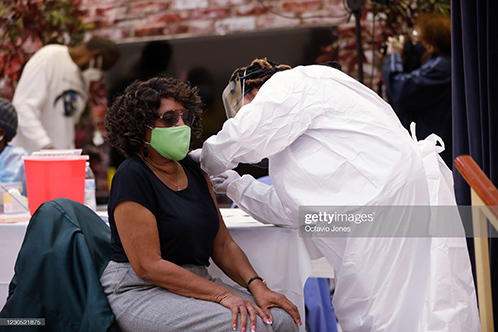NY, NY, Tues. Feb. 2, 2021 (Reuters) – Early data of U.S. vaccinations on Monday suggested that Blacks and Hispanics received a smaller proportion of shots than their representation among healthcare workers and nursing home residents, two priority groups for COVID-19 inoculations.
The U.S. Centers for Disease Control and Prevention released the data and said the United States needs more complete data on the race and ethnicity of people who have been vaccinated.
Blacks and Latinos are among the hardest hit by COVID-19, and public health officials have broadly called for equity in vaccine distribution.
Race data was only available for about half of the 12.92 million people vaccinated in the United States between Dec. 14, 2020 and Jan. 14, 2021.
Blacks received 5.4% of shots reported with race/ethnicity data, the CDC said, comparing that with national data showing Blacks made up 16% of healthcare workers and 14% of nursing home residents, two of the priority groups for vaccinations.
Hispanics/Latinos received 11.5% of the shots with reported race/ethnicity data, while making up 13% of healthcare workers and 5% of nursing home residents.
Whites received 60.4% of shots and accounted for 60% of healthcare workers and 75% of nursing home residents.
That mirrored data from New York City over the weekend, showing that while Blacks made up 24% of the city’s population, according to 2019 data, they have so far sought and received only 11% of coronavirus vaccinations.
The federal data showed that of those for whom racial/ethnic data was reported, 14.4% were reported as multiple/other, 6.0% Asian and 2.0% American Indian or Alaskan Natives, the study showed.
The CDC said the data was limited by the extent of race/ethnic data reported, and because states and vaccination points did not use the same criteria for giving out shots.
(Reporting by Manas Mishra in Bengaluru; Editing by Steve Orlofsky)










